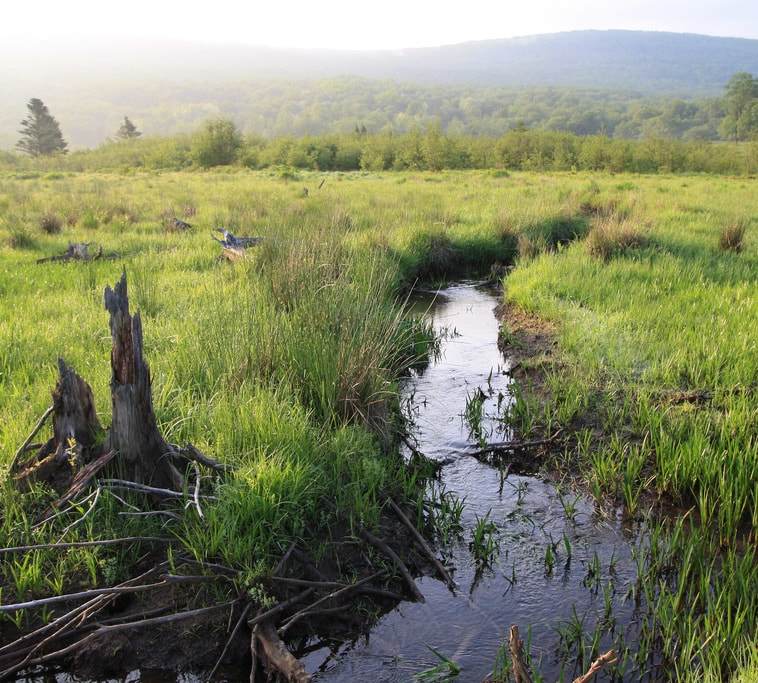Canaan Valley is located within the Allegheny Mountains in Tucker County, stretching for 14 miles along the Blackwater River which is partly-fed by the valley's extensive wetlands. The unique climate and landscape make Canaan Valley a diverse ecosystem, home to over 520 plant and 285 animal species. Efforts to preserve this important natural landmark began in the mid-20th century.
Over the next twenty years, Canaan Valley's popularity among sportsman and tourists grew. In the 1970s, the state park opened the first ski trails in West Virginia, drawing even more visitors to the region. The increased activities in Canaan Valley were encouraging for the local economy, but also concerning to those who were observing consequential changes in the valley, including development and damage to natural habitats. Further compounding the issue, a power company was studying the possibility of creating a hydroelectric dam in the vicinity which would have flooded significant parts of the valley. Constituents wrote to Senator Byrd urging the establishment of federal protection in Canaan Valley to prevent further destruction of the natural landscape. In the late-1980s, the US Fish and Wildlife Service began conducting studies in the region to determine if a national wildlife refuge might be the best solution to preserve the unique ecosystem of Canaan Valley while also accommodating the vital tourism and recreation economy supporting the region. The plan met some significant opposition among local residents who were concerned about the impact the proposed refuge would have on hunting and fishing in the region as well as access to their private property. The US Fish and Wildlife Service and local organizations worked together to reach a compromise. While the boundaries of the new refuge would encompass 24,000 acres in Canaan Valley, refuge restrictions would not be imposed until land was acquired by the fish and wildlife service, granting protections to existing landowners in the region. Meanwhile, Senator Byrd was working to secure federal appropriations to begin acquiring land. In 1993, the Senate approved a $2 million appropriation for the new refuge. In 1994, the first piece of land was acquired for the refuge, an 86 acre tract which had previously been a farm. Upon its creation, the Canaan Valley National Wildlife Refuge became the 500th refuge in the United States and only the second to be established in West Virginia (the Ohio River Islands National Wildlife Refuge was created four years earlier). The refuge continued to slowly grow throughout the late-1990s, acquiring small pieces of land throughout the valley. By 2002, the refuge protected 3,245 acres of land in Canaan Valley though it was still far from its goal of protecting 24,000 acres.
When Senator Byrd spoke at the dedication of the Canaan Valley National Wildlife Refuge on October 22, 1994, he recalled that “where once we viewed West Virginia’s stunning natural resources mainly in the context of generating energy through mining for coal, drilling for natural gas and oil, or harnessing the power of our raging rivers, we have now come to see them as a treasure trove of beauty and wildlife to be carefully preserved.”
Comments are closed.
|
Welcome to the Byrd Center Blog! We share content here including research from our archival collections, articles from our director, and information on upcoming events.
Categories
All
Archives
July 2023
|
Our Mission: |
The Byrd Center advances representative democracy by promoting a better understanding of the United States Congress and the Constitution through programs and research that engage citizens.
|
Copyright © Robert C. Byrd Center for Congressional History and Education
|




 RSS Feed
RSS Feed
